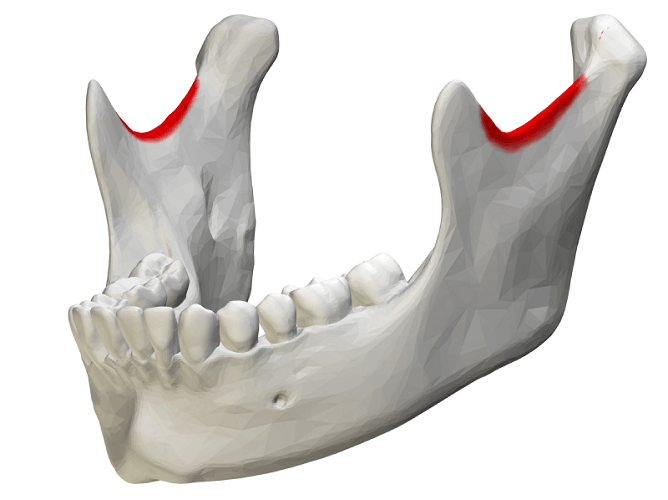The complex process of producing speech sounds by using the vocal tract and articulators.
What is (speech) articulation?

What is the mandible?
This bone makes up the bony forehead.
What is the frontal bone?
This is the largest mobile articulator.
What is the tongue?
These muscles move the tongue with one component on the tongue and one outside of the tongue.
What are extrinsic muscles?
A type of trauma to the face or dentition that causes changes in speech.
What is MVA/sports injury/gunshot wound/etc?
This is the energy source for speech.
What is respiration?
This paired bone is the second largest face bone.
What is the maxilla?
This bone houses the hearing mechanism.
What is the temporal bone?
These are housed within the alveoli of the maxillae and mandible and are important for mastication.
What are teeth?
The longitudinal, transverse, and verticals are all types of these and make fine adjustments to the tongue.
What are intrinsic muscles?
Craniofacial conditions present at birth that result in total or partial lack of separation of oral and nasal cavities.
What is cleft palate and/or lip?
When the vibrating vocal folds are the source, and the oral and/or nasal cavities provide the filter.
What is Source-Filter theory?
This bone makes up what we call the "cheekbone".
What is the zygomatic?
These paired bones form the middle portion of the braincase.
What are the parietal bones?
These are known as "baby teeth" and begin to form in embryonic development.
What are deciduous teeth?
All facial muscles insert into this muscle.
What is the orbicularis oris?
The point of a muscle that has very little movement as compared to the point of insertion that is relatively mobile during contraction.
What is origin?
This term refers to the study of the function of an organism.
What is physiology?
The U-shaped bone that attaches the tongue to the larynx.
What is the hyoid?
A landmark of this bone is the foramen magnum, which allows the spinal cord to enter the cranial cavity.
What is the occipital bone?
This articulator is used to differentiate the /m/ from the /b/ phonemes.
What is the velum?
This muscle runs along the entire upper layer of the tongue and helps elevate the tongue tip.
What is the (superior) longitudinal?
May functionally be a muscle of the palate (velum) or the tongue.
(has dual purpose of depressing palate and elevatingback of tongue)
What is the palatoglossus muscle?
The repetition of syllables at a maximum rate to determine function, as in /pa-pa-pa/.
What is diadochokinesis?
These small bones articulate with the frontal bones and make up the superior nasal surface.
What are the nasal bones?
This butterfly shaped bone is very complex and is the bulk of the floor of the cranial cavity.
What is the sphenoid bone?
This articulator is faster and stronger than the upper lip.
What is the lower lip?
This muscle arises from the hyoid bone and runs along the sides of the tongue.
What is the hyoglossus muscle?
Typically a muscle of neck but functions with the mandible to lower it for chewing.
What is the platysma?
The hole in the base of the skull through which the spinal cord passes.
What is the foramen magnum?
The portion or "ridge" of the maxillae that holds the teeth.
What is the alveolar process? (or alveolar ridge)
These openings in the temporal bones are conduits for the VII cranial nerves (auditory) on way to the brainstem.
What are the external auditory meatus?
This is the overlapping effect of one articulatory movement on another.
What is coarticulation?
What is the masseter?
The inability of the velum to elevate can result in this effect on speech sound production.
What is hypernasality?